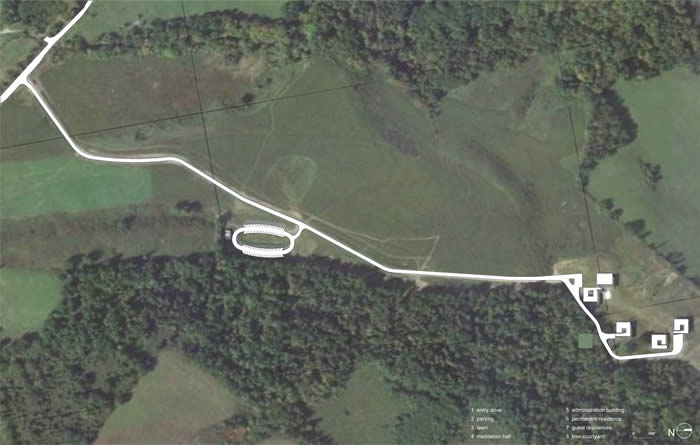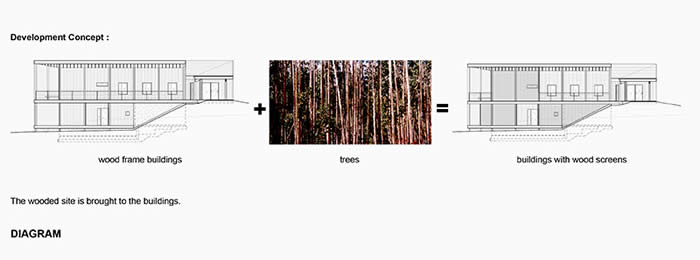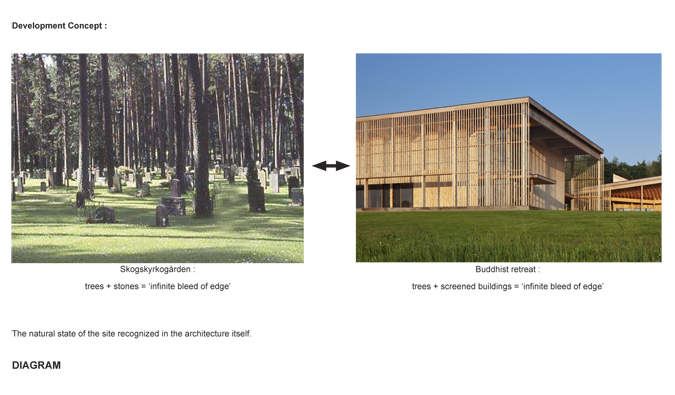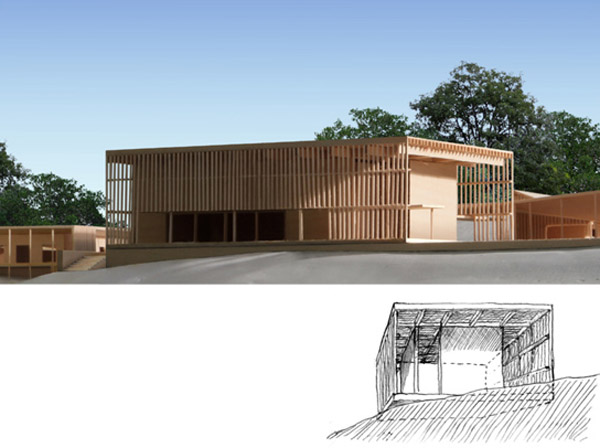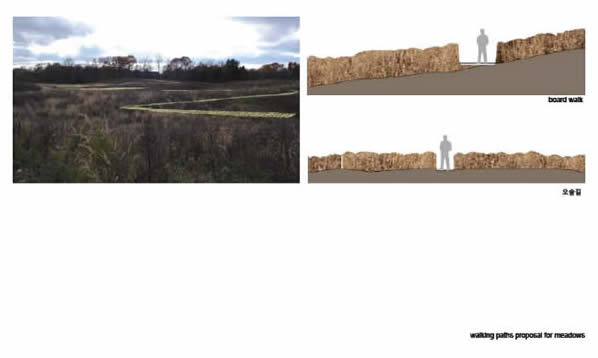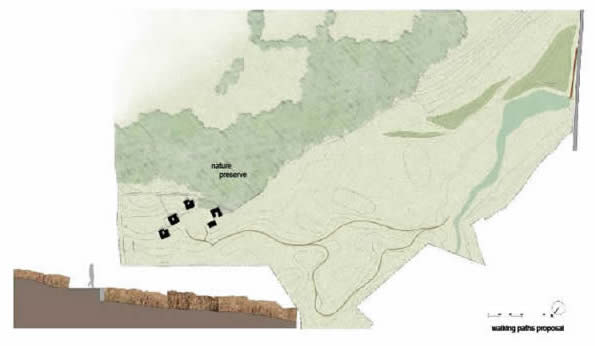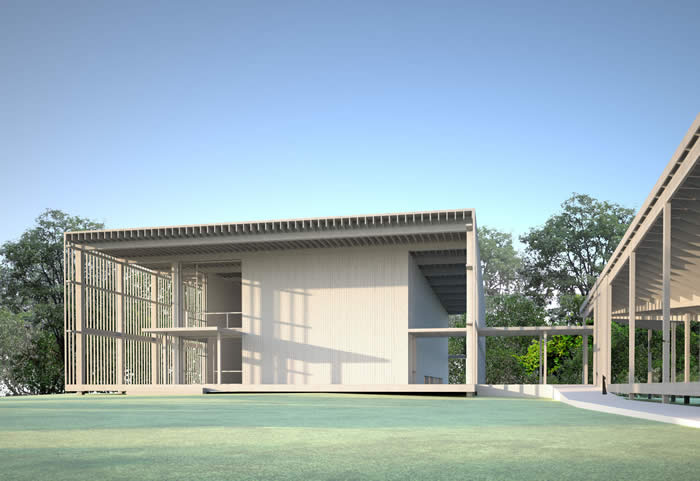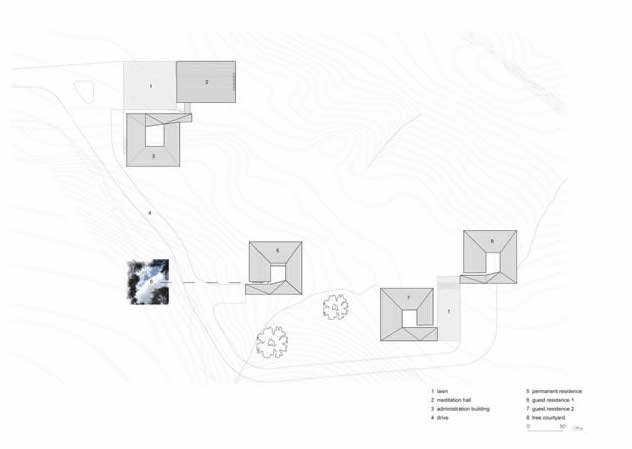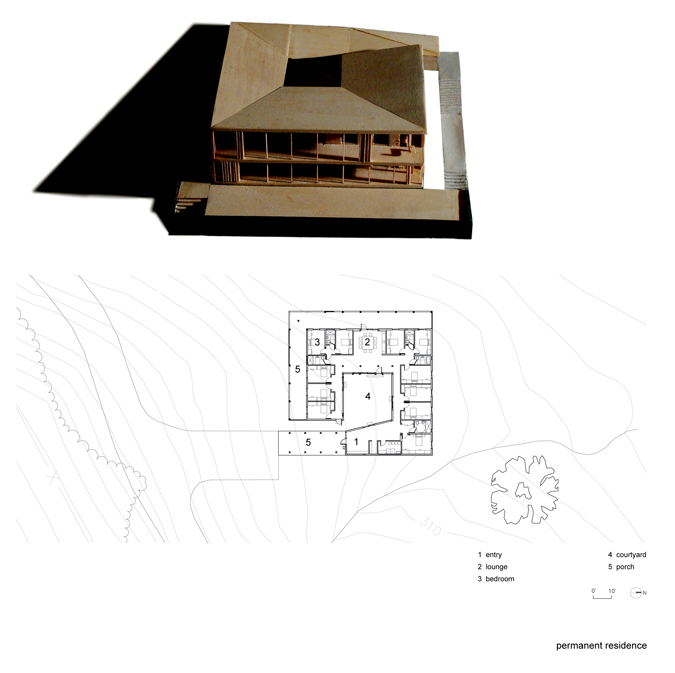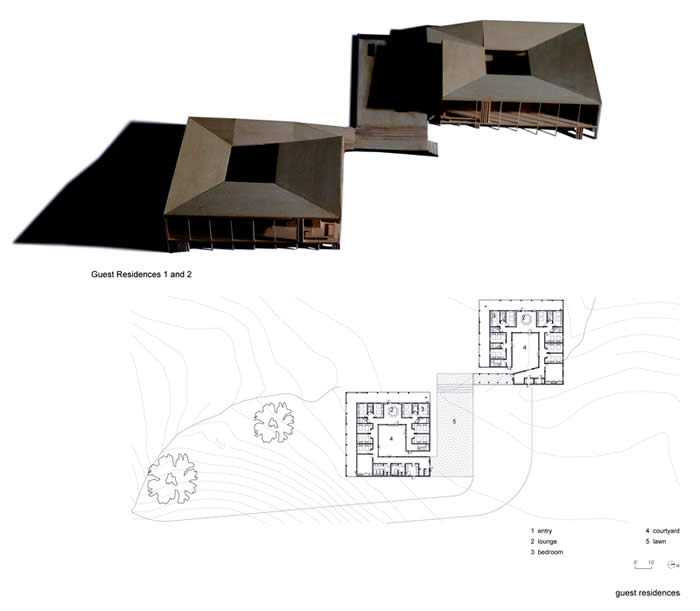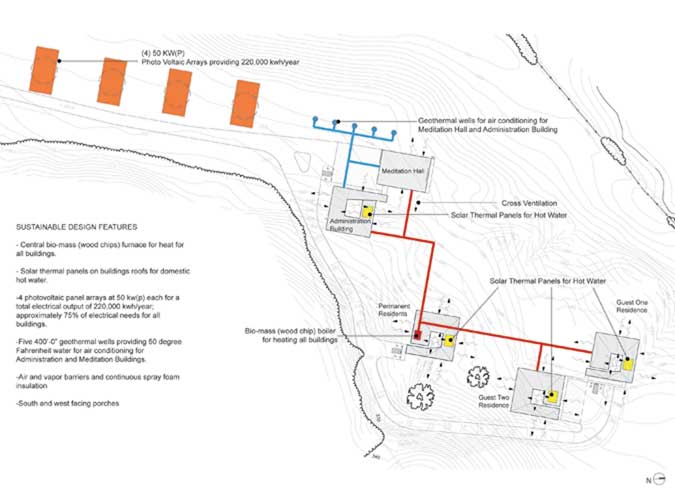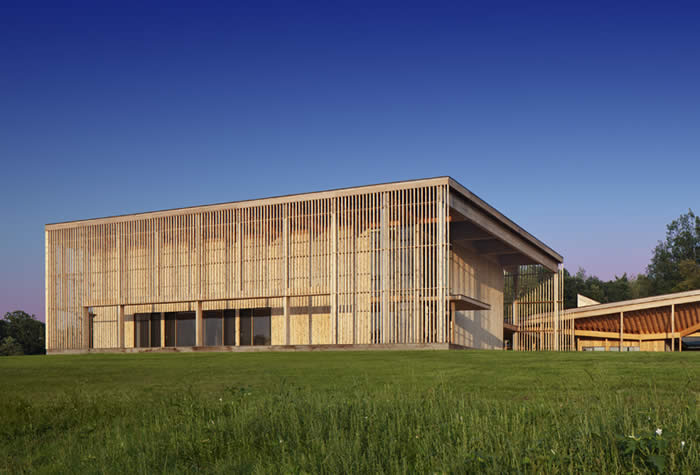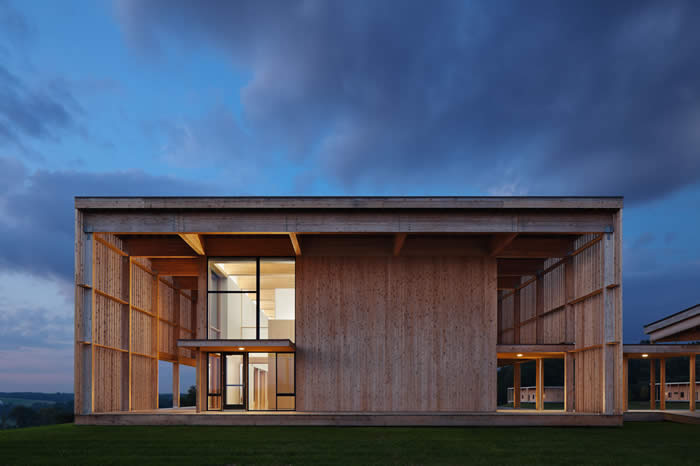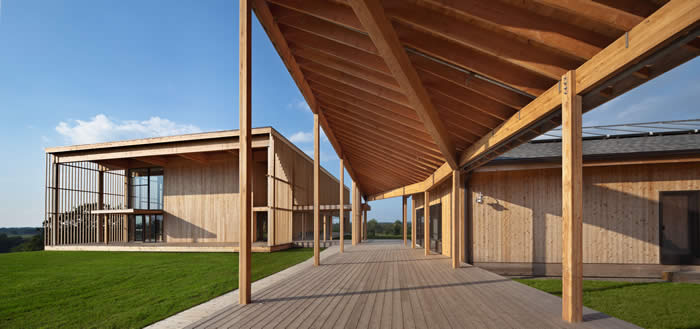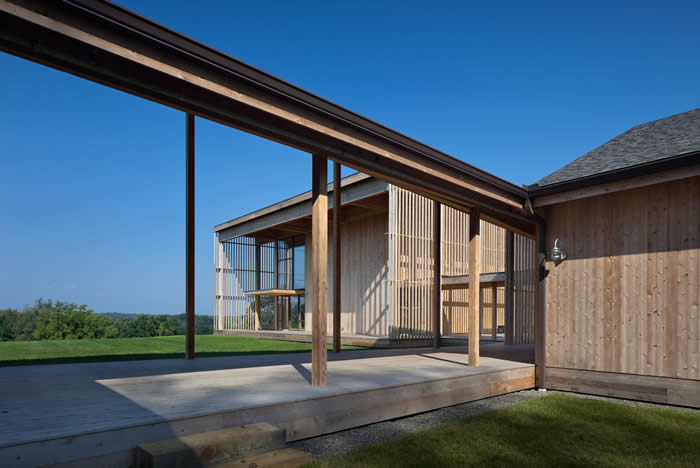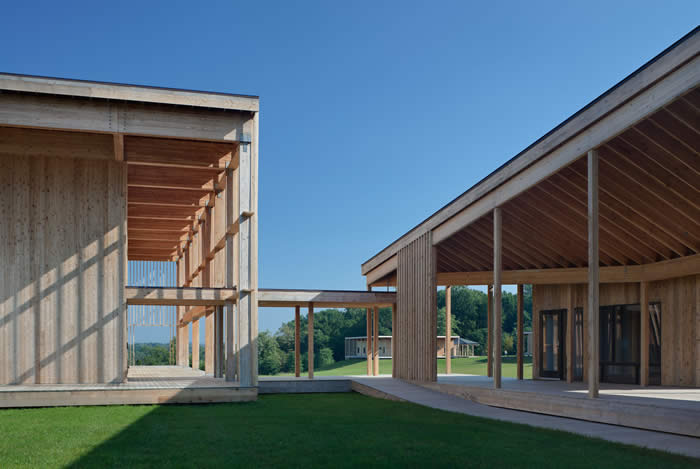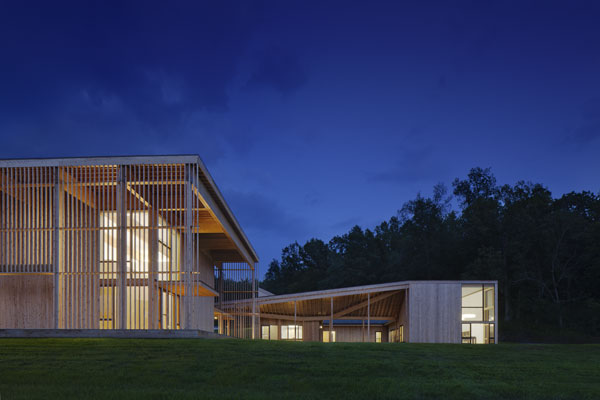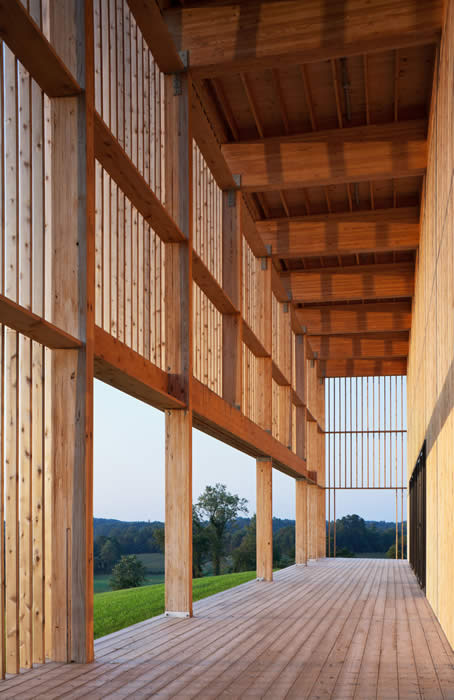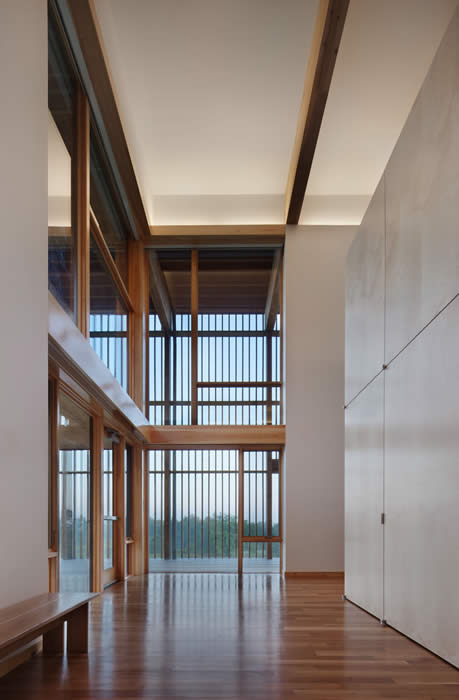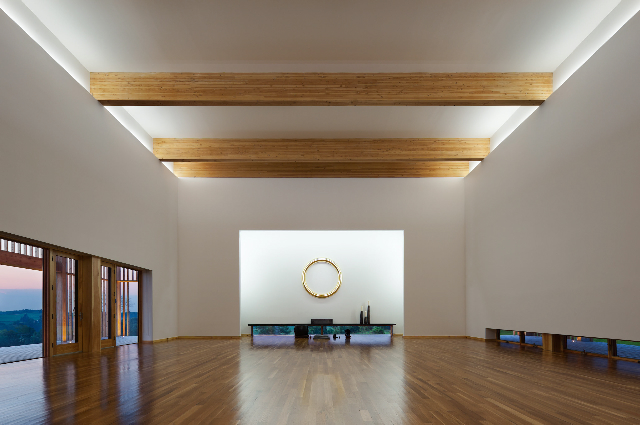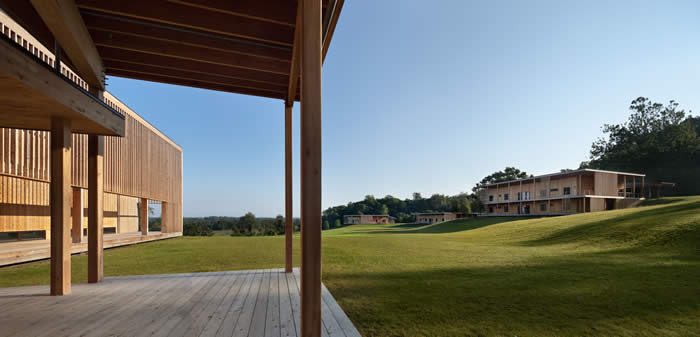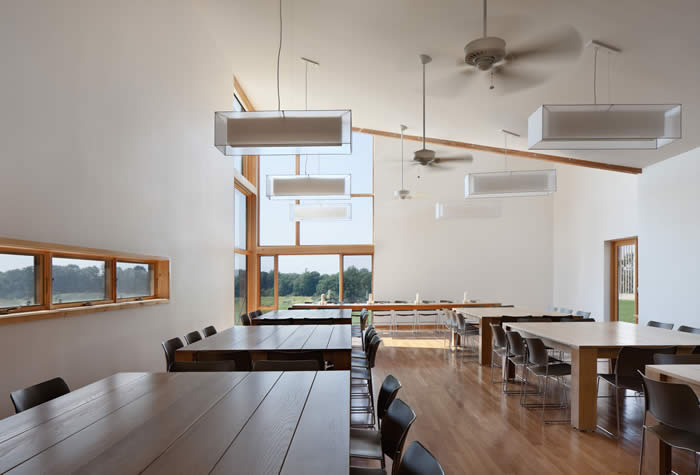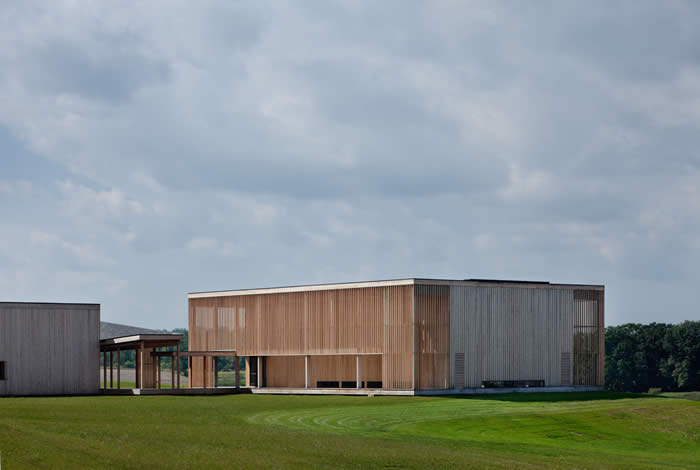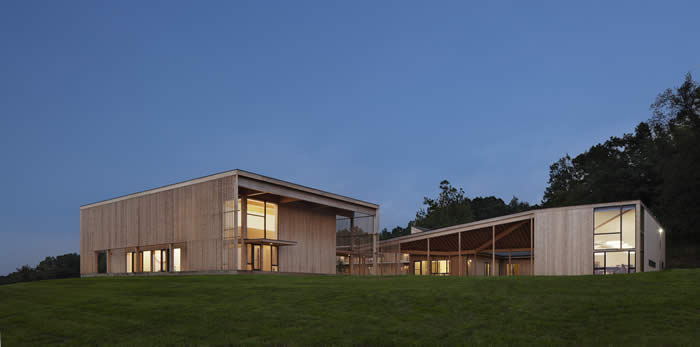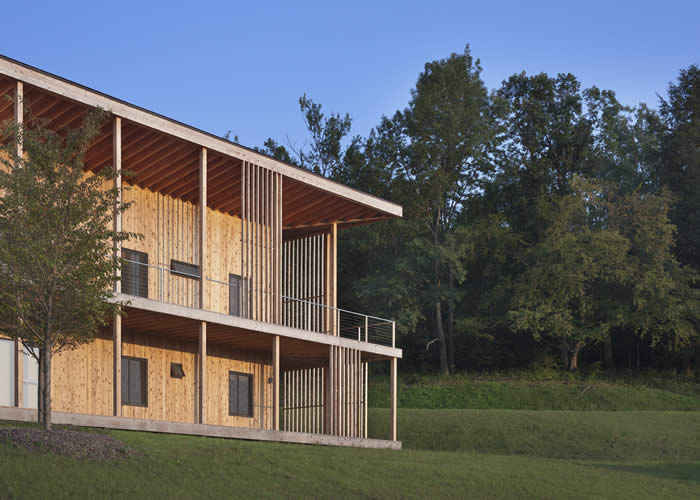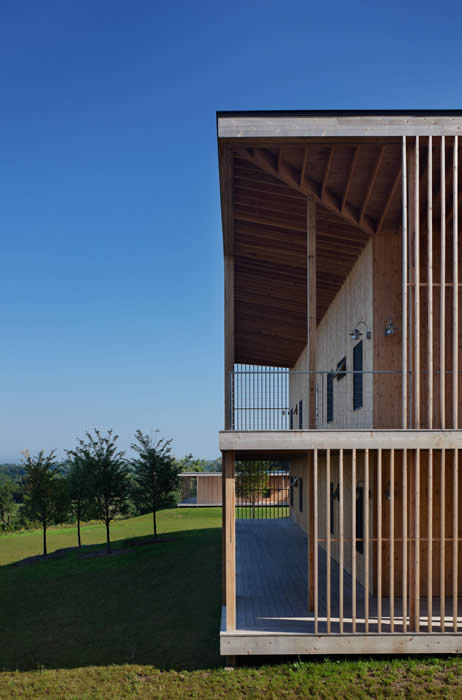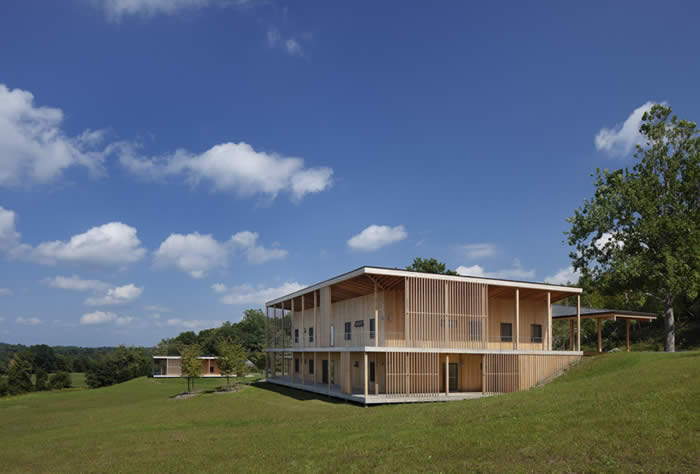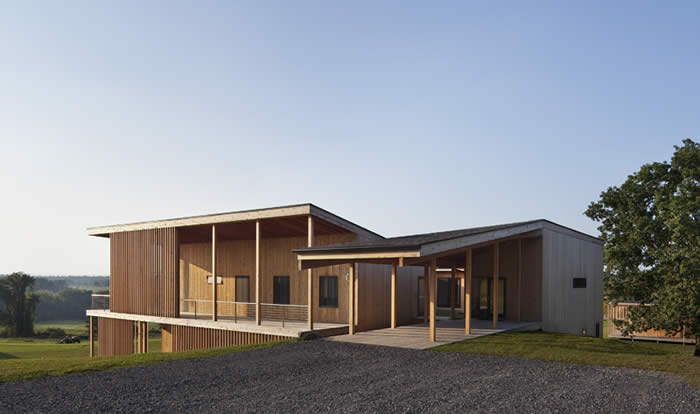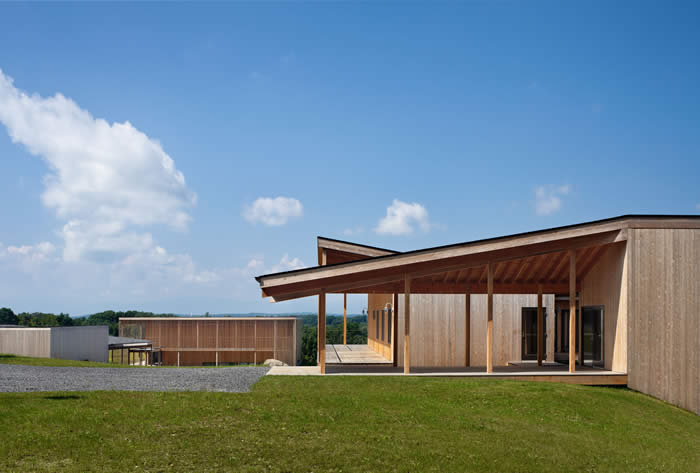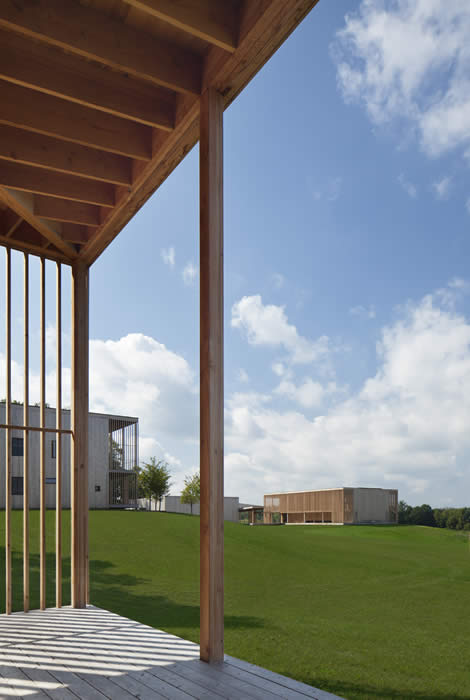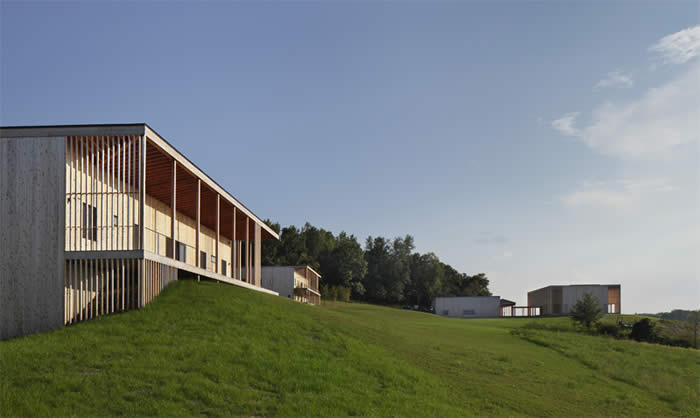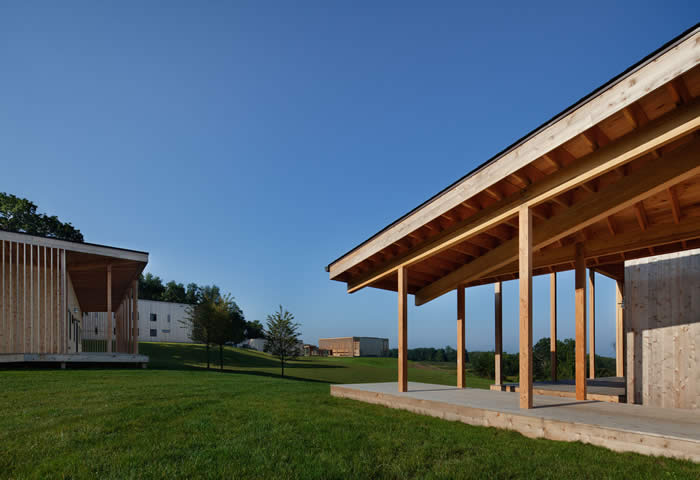hMa | HANRAHAN MEYERS ARCHITECTS | DESIGN IS A FRAME TO NATURE. PROFILE | PROJECTS | NEW & IN PROGRESS | BOOKS BY hMa | LINKS |
|
infinity chapel
hanrahan Meyers architects in collaboration with Myonggi Sul project: Won Dharma Center client: Won Buddhism of America, Inc.
Announcement : Won Dharma Center wins 2010 Design Award from Faith & Form / IFRAA International Awards Program for Religious Art and Architecture. The project will be featured in the 2010 Awards issue from Faith and Form Magazine as well as displayed at the 2011 National Convention of the American Institute of Architects in New Orleans on May 12, 2011. The Won Dharma Center is a 3,000 square-meter recreational and spiritual retreat in Claverack, New York for a Korean Buddhist sect that emphasizes balance in daily life with a focus on nature. The retreat site is a 500-acre property on a hill with views west to the Hudson River Valley and the Catskill Mountains. The buildings for the retreat, including permanent and guest residences, an administration building and a meditation hall, are sited as far as possible from the rural highway Route 23 at the south of the site. The buildings are oriented west toward views of the Catskill Mountains, and south to maximize natural light. The symbol of the Buddhist organization is an open circle, suggesting a void without absence and infinite return. The retreat buildings are organized around the concepts of void and spiral. Void refers to Buddhist meditation, the focus of the retreat experience. Spiral refers to the practice of walking meditation. Walking meditations include paths that link the retreat buildings into the site’s 350-acre nature preserve.
The clients requested that the architects design their new retreat using as many natural materials as possible in harmony with the rural character of the region. The architects selected wood as the best material to address the client’s philosophy. With the Buddhists’ tree-planting agenda for the future remediation of the site, the architects designed wood screens for all of the building porches to further the goal of designing the buildings to merge with the landscape. The screens recreate the dappled effect of sunlight coming through tree canopies, while also providing solar protection. The first point of site access takes visitors through a stone entrance gate. Retreat visitors are encouraged to leave their cars at the parking lot, located approximately 500 feet south of the Meditation Hall, and walk to the center along a winding path under the tree line. The first view of the retreat compound from the path is the grass lawn in front of the administration building and adjoining meditation hall. Upon arrival, the view of the meditation hall acts as a public gate to the retreat experience. The 3,000 square-foot meditation hall is a precise, rectangular void and a lightweight frame to the natural surroundings. Its wood structure is exposed on three sides to form entrance and viewing porches, while the interior offers views of the mountains from the meditation space. The administration building is linked to the meditation hall by a series of porches designed to accommodate formal walking from administration to meditation. These two buildings and their porches frame the outdoor lawn with views of the Catskill Mountains to the west. The other buildings include the residential buildings for guests and permanent residents. The designs of the residential buildings and the administration building are based upon traditional grass-roofed Korean farm-houses, loosely clustered and organized internally around central courtyards. The roof shapes of each of these buildings transform in section around a spiral organization, from a simple slope in section to a complex triangulated geometry at the entrance porches. The internal organization of each courtyard building supports silent walking meditation around the inner courtyards and adjacent outdoor porches and spaces. The courtyards provide passive cooling, allowing cross ventilation. Like the meditation hall, all of the courtyard buildings are wood and deeply shaded to the west and south to allow natural day-lighting without excessive heat gain. The permanent residence building is exclusively for retired ministers, and provides lodging for twenty-four members of the organization. The two guest residences provide lodging for up to 80 retreat visitors. Rooms are simply and elegantly furnished with specially designed furniture made from plywood and oak complementing the architectural design. All interior lights are low-voltage fluorescent or LED. All exterior lights are solar-powered fluorescent low lighting, with zero light pollution. The area where the buildings are sited had been cleared of trees for use as a quarry for crushed rock. The Won Buddhists are working with a local arborist to plant new trees across the site, and are conducting an on-going remediation of the site to include a mixture of wooded areas mixed with meadows to foster local wildlife habitats. This planting will extend the naturally wooded 350 acres that are set aside as a permanent nature preserve into the area of center itself. The entire complex is designed as a net zero-carbon footprint project. The architects designed a heating and cooling system that includes geo-thermal wells, a photo-voltaic array, solar thermal roof panels, and a central bio-mass boiler. The Won Buddhists have committed to harvesting only fallen trees from their nature reserve as fuel for the boiler, resulting in a zero-carbon footprint for the heat system. The buildings employ state-of-the-art construction systems, including spray-foam insulation, low-e glass insulated windows, and a radiant in-floor heating system to minimize energy costs for year-round occupancy.
|
|
